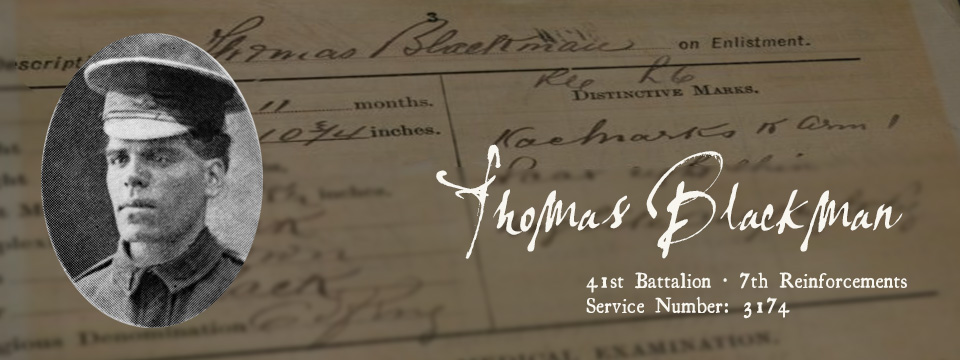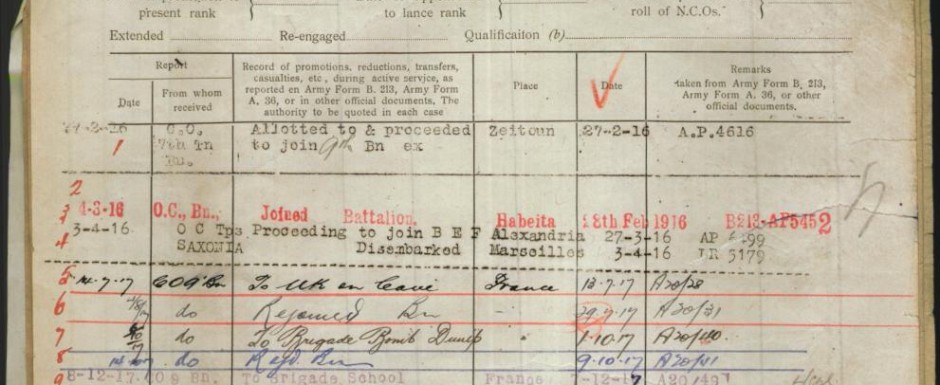Pte Thomas Blackman was born at Boompa, Gayndah, in Queensland. His mother was Emily DeShong, and his father was Thomas Blackman from Apple Tree Creek in the Childers area. Prior to enlistment, Pte Thomas Blackman worked as a stockman. He enlisted in 1916, just one month shy of his 25th birthday and embarked from Sydney in NSW on board the ship HMAT A18 Whiltshire on the 7th February 1917. He joined his brothers Charles and Alfred Blackman. Alfred and Thomas were both injured in the same battle: Thomas suffering from “shell-shock”. He is also listed as A.W.L. (Absent Without Leave) for a period after Alfred died of his wounds. Thomas returned to Australia on the 17th December 1918. His other brother Charles, also returned to Australia on the 12th April 1919.
Some years later Thomas Blackman wrote to Caroline Tennant-Kelly, an anthropologist who worked in Barambah, asking her to intervene on his behalf regarding his forced removal to Cherbourg by the Chief Protector. He feels victimised as a former WW1 digger and questions why he has had his exemption removed after serving his King and country. (See his letter in full, below p.x)
“Shell shock”
“Shell shock” was a term used to describe the reaction of some soldiers in World War I to the trauma of battle.
It could include symptoms as varied as panic, intense fear, horror, an inability to reason, sleep, walk or talk. During the war, cases of “shell shock” could be interpreted as either physical or psychological, or even as a lack of “moral fibre”. Many soldiers never fully recovered from the horrors of war and brought these symptoms home with them. At the time of WW1, none of these conditions were properly recognized or understood. Limited support and treatment was offered to those who presented with symptoms, which today are described as PTSD or Post Traumatic Stress Disorder. We must recognise the toll that war takes on individuals and show understanding and compassion to those who suffer as a result of their sacrifice and service.


